#karl holstein gottorp
Explore tagged Tumblr posts
Text
Thyra: eating a cinnamon roll
Charles: Cannibalism.
Thyra: confused chewing noises
#history memes#incorrect quotes#crown princess thyra#karl xiii#charles xiii#karl holstein gottorp#charles holstein gottorp#thyra amalie caroline charlotte anna glücksburg#sorry for the long tags
2 notes
·
View notes
Text
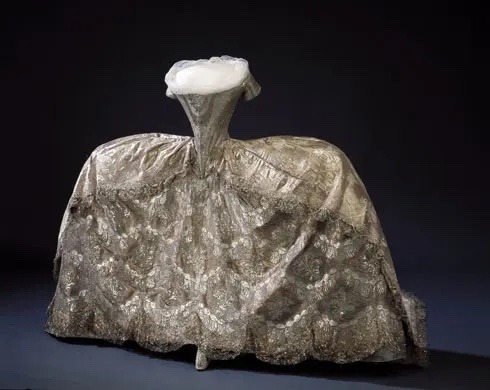
Wedding gown of Edwidge Elisabeth Charlotte Holstein-Gottorp, wife of Prince Karl and sister-in-law of King Gustav III of Sweden
23 notes
·
View notes
Text
The Lost Grand Duchesses: Part 1 - Anna Petrovna

Anna Petrovna was born in January 1708, officially out of wedlock. Her father, Peter ‘the Great’, had six daughters; Ekaterina, Anna, Elizaveta, Maria Natalia, Margarita, and Natalia. Peter planned to marry every daughter that survived infancy to a European house in order to consolidate alliances and friendships with Russia. Peter did not raise Anna, instead giving her to his younger sister Natalia Alexeievna and her husband Alexander Danilovich to raise. Peter’s plan to use the girls as alliance pawns influenced their childhood greatly; their education included embroidery, literature, dancing, and etiquette in order to be perceived as proper and lady-like. By her teenage years, Anna could speak five languages, no doubt to make her more attractive to European houses. Meanwhile, Peter’s sons were taught geography, history, and mathematics.
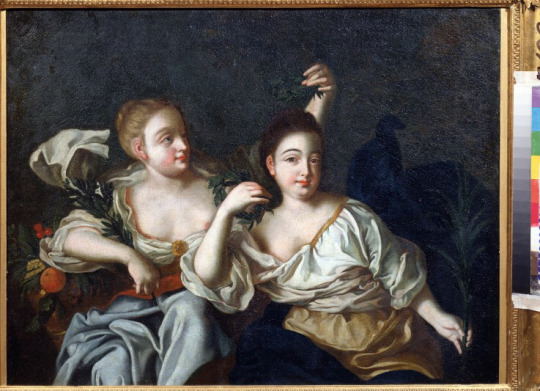
In 1721, serious marriage was on the table. Karl Friedrich of Schlewsig-Holstein-Gottorp was called to Russia, in order to meet Anna and her father. Karl had just entered his twenties, and his denouncers insisted that he was rude and arrogant. In comparison, Anna was barely thirteen years old, and incredibly shy.
This did not deter Peter, who was incredibly attracted by the idea of a Schleswig-Russian alliance. After a few years of shopping for other potential candidates, the marriage contract was signed. Ironically, the bride was not on the contract, and it was her father Peter and Karl Friedrich who signed. When the men signed the contract, Anna’s right to the Russian throne was instantly revoked.

In 1725, less than a year after the marriage between Anna and Karl Friedrich, Peter ‘the Great’ fell seriously ill. He called for Anna, whom he asked to write his will under his dictation. There has been great speculation over whether Peter planned to name Anna his heir; even though she had been forced to revoke her right to succession when her marriage was arranged, the Tsar of Russia still retained the power to elect his own heir regardless of the marriage contract terms. Peter was unable to speak, passing away shortly after, before declaring his heir. Whether or not Peter desired to make Anna heir remains one of history’s big ‘’what if’ questions.
In 1727, Anna and her husband Karl Freidrich moved to his native Kiel. Anna was deeply unhappy, missing her sister and nephew Peter Alexeievich; the Grand Duchess loved children. She wrote copious letters to her sister, Ekaterina, detailing her depression at being taken away from her home country. The rumours of Karl Freidrich’s arrogance appeared true; he preoccupied himself with affairs, leaving a pregnant Anna isolated.
In February, Anna gave birth to a baby boy, named Carl Peter Ulrich. Just days after, Anna contracted Puerperal fever, then known as ‘childbed fever’, a postpartum infection most likely caused by contaminated medical equipment and/or the medical staff not practicing proper hygiene. Anna became gravely ill, and requested to be buried back in her homeland, alongside her father in St. Petersburg. Her son Carl Peter survived the labour, and outlived his father, becoming the Duke of Holstein-Gottorp. When his aunt Elizaveta, Anna’s sister, died in 1762, Carl Peter became the Tsar of Russia, adopting the name Peter Feodorovich, Peter III.

Despite refusing to parent Anna himself, trying to marry her off when she was a child, and signing a marriage contract without Anna’s signature of consent, Peter claimed that Anna was his ‘favourite daughter.’ Only three of Peter’s fifteen legitimate children survived into adulthood. Anna died when she was only twenty years old. Her brother, Alexei Petrovich was imprisoned and tortured under the order of his father, dying from the torture. Only Anna’s beloved sister Elizaveta survived unscathed - the only out of fifteen siblings.

#the lost grand duchesses#anna petrovna#petrovichi#peter the great#he sounds like a tosser#alexei petrovich#old romanovs#russian history#romanov family#1700s#18th century#royal history#womens history#women in history#peter iii
30 notes
·
View notes
Text
Wives and Daughters of Russian Tsars: Ages at First Marriage
I have only included women whose birth dates and dates of marriage are known within at least 1-2 years, therefore, this is not a comprehensive list. This data set ends with the daughters of Peter I; the start of Imperial Russia.
Anastasia Romanova, wife of Ivan IV; age 17 when she married Ivan in 1547 CE
Maria Temryukovna, wife of Ivan IV; age 16 when she married Ivan in 1561 CE
Maria Skuratova-Belskaya, wife of Boris Godunov; age 18 when she married Boris in 1570 CE
Marfa Sobakina, wife of Ivan IV; age 19 when she married Ivan in 1571 CE
Anna Koltovskaya, wife of Ivan IV; age 20 when she married Ivan in 1572 CE
Maria Nagaya, wife of Ivan IV; age 28 when she married Ivan in 1581 CE
Irina Godunova, wife of Feodor I; age 23 when she married Feodor in 1580 CE
Yelena Sheremeteva, wife of Ivan Ivanovich; age 28 when she married Ivan in 1581 CE
Marina Mniszech, wife of False Dmitry I; age 17 when she married Dmitry in 1605 CE
Maria Dolgorukova, wife of Michael I; age 23 when she married Michael in 1624 CE
Eudoxia Streshneva, wife of Michael I; age 18 when she married Michael in 1626 CE
Maria Miloslavskaya, wife of Alexis; age 24 when she married Alexis in 1648 CE
Natalya Naryshkina, wife of Alexis I; age 20 when she married Alexis in 1651 CE
Agafya Grushetskaya, wife of Feodor III; age 17 when she married Feodor in 1680 CE
Marfa Apraksina, wife of Feodor III; age 18 when she married Feodor in 1682 CE
Praskovia Saltykova, wife of Ivan V; age 20 when she married Ivan in 1684 CE
Eudoxia Lopukhina, wife of Peter I; age 20 when she married Peter in 1689 CE
Catherine I of Russia, wife of Peter I; age 18 when she married Johan Cruse in 1702 CE
Anna of Russia, daughter of Ivan V; age 17 when she married Frederick William Duke of Courland and Semigallia in 1710 CE
Charlotte Christine of Brunswick-Wolfenbuttel; age 17 when she married Alexei Petrovich in 1711 CE
Catherine Ivanovna, daughter of Ivan V; age 25 when she married Karl Leopold, Duke of Mecklenburg-Schwerin, in 1716 CE
Anna Petrovna, daughter of Peter I; age 17 when she married Charles Frederick I, Duke of Holstein-Gottorp, in 1725 CE
The average age at first marriage was 18 years old.
3 notes
·
View notes
Text
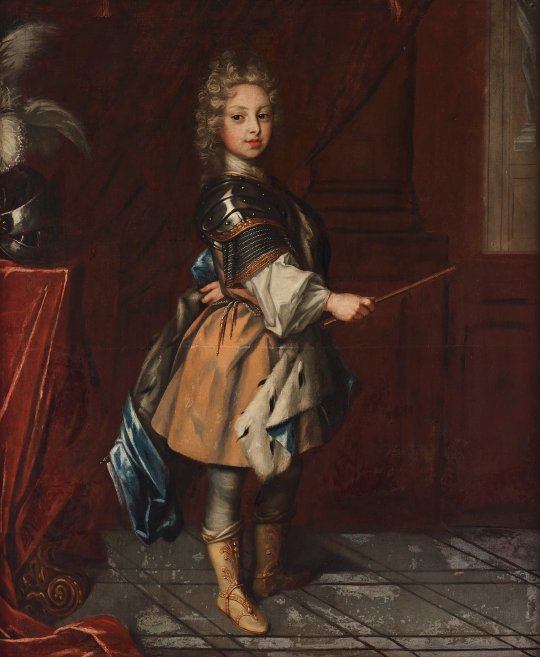
David von Krafft - Karl Fredrik, Duke of Holstein-Gottorp as child (1700-1739)
4 notes
·
View notes
Photo


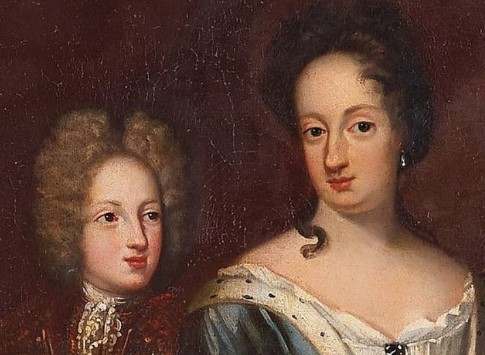

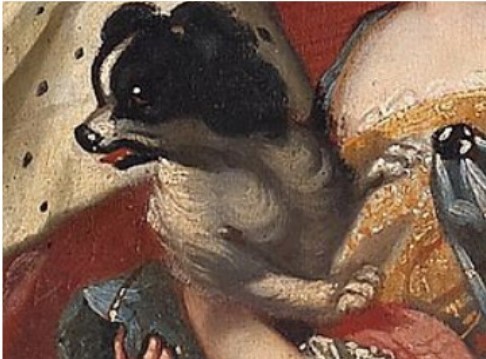
Karl XI and his family
David Klöcker Ehrenstrahl, c.1692
#David Klöcker Ehrenstrahl#Hedvig Eleonora of Holstein-Gottorp#Karl XI#Karl XII#Ulrika Eleonora of Denmark#Queen Ulrika Eleonora#Frederick IV of Holstein-Gottorp#Frederica Amalia of Denmark#Hedvig Sofia of Sweden#Doggos#Royalty#Art#Details#i love everything about this painting#except frederick#his smug face is insufferable
14 notes
·
View notes
Photo

Crown jewels belonging to the Swedish Royal Family were stolen yesterday by thieves who sped away on a speedboat.
Police were seen chasing the two suspects on a motorboat after the 'priceless' items were taken from Strängnäs Cathedral in southeastern Sweden.
Two royal crowns - one belonging to King Karl IX, the other to Queen Kristina - were taken, as well as a royal orb.
Source/Read More
(FYI it wasn’t the famous Queen Christina they’re talking about, this is Karl’s wife, Christina of Holstein-Gottorp)
#karl ix#charles ix#Christina of Holstein-Gottorp#swedish monarchy#swedish royal family#crown jewels
139 notes
·
View notes
Text
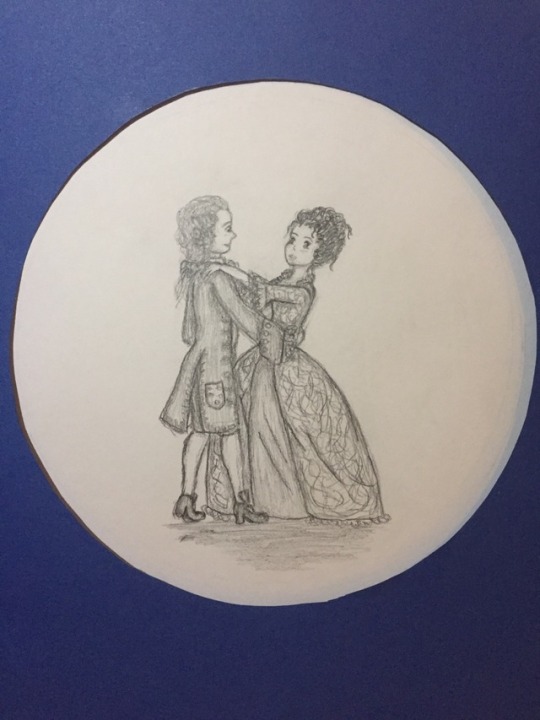
Finally got the time to upload this thing...
#Hedvig Sofia of Sweden#Frederik of Slesvig-Holstein-Gottorp#dancing#drawing#history#creativity#au#happy ending#karl xii
8 notes
·
View notes
Text
Subtext and Culture, Young Royals, What's in a name?
I thought I was done, but I have material for one more post. I want to write more about how royal names work, because I've seen a lot of confusion and simple lack of knowledge in the tags, so think of this as more of an informative culture post than an analysis post of the show.
European royals and nobles have styles, names, titles, and houses. In addition, monarchs have regnal names.
A style is how you formally address someone, based on their rank and title. In Sweden, the only styles left are "majesty" and "royal higness", where kings and queens are addressed as "your majesty", and select members of the royal family are addressed as "your royal highness". In Swedish, these styles are often abbreviated as H.M. - Hans/Hennes Majestät and H.K.H. - Hans/Hennes Kungliga Höghet. In English, the abbreviations are HM and HRH.
In the show, you can see this when Simon meets the Queen, and shakily addresses her as "Your Majesty", or when Minou calls up August and says "Her Majesty the Queen has resolved your problems with the school fee".
In less formal, but still polite speech, you would use third person addressing when talking to or about the royals, and there are numerous examples of this in the show:
Anette to Erik: "How nice to see the crown prince again!"
Some aide to Wilhelm: "Could we get a shot of the prince shaking hands with the headmistress?"
Anette: "Wilhelm, sorry, the crown prince, how nice the memorial was!"
August: "The queen has asked me, personally, to take care of him."
Malin: "I just wanted to remind the crown prince that breakfast closes in five minutes."
Names for royals and nobles work just like the rest of us, but with one exception: Royals generally do not use last names, while lesser nobles do. They also tend to have several first names, and while they generally pick names for their children based on trends in society, they stay on the traditional conservative side, and they often pick names from their family history.
The show only tells us one first name for each member of the royal family: Kristina, Ludvig, Erik, and Wilhelm, so we have no idea what other names they might have.
In the real world, the name of the king of Sweden is Carl Gustaf Folke Hubertus, the crown princess' name is Victoria Ingrid Alice Désirée, and her oldest daughter's name is Estelle Silvia Ewa Mary, just to give you some flavour of what it could look like.
Titles are what sets higher nobles apart from us mere commoners, and have their origin in the feudal system of medieval Europe, which was a hierarchical socio-economic-military system where the lord of a land could grant a portion of his land, a fief, to a vassal in exchange for fealty - loyalty, taxes, and military service. Doing so would create a title, it would make the vassal a noble of a lower rank than his lord, because you could only create titles lower than the one you possessed. So, in general, kings could create dukes or lower, dukes could create counts or lower, and counts could create barons. The fief of a duke is called a duchy, a count ruled over a county, and a baron over a barony, although there were more ranks and more titles than that, depending on region and language, but those are the main ones.
Every single squabble or conflict or battle or civil war or war fought in the middle ages was over the titles, because the titles legally conferred ownership of a piece of land, and with it the rights of taxation and the economic value of that land. Over time, kingdoms got more centralized and the hierarchical nature of the system broke down, while the titles became more hereditary, and ownership of the land became less important, which meant that minor nobles lost the power to create vassals and fiefs, while the power to create titles was reserved for the monarchs, and titles created in this era usually only granted people a title for an area or a castle or a manor house that they already owned.
Going into modern times, European countries curbed title creation, but generally kept protections for existing titles and allowing them to be inherited according to whatever inheritance rules applied to each title. But if a title holder dies without a legal heir, the title is lost forever, which means that most modern day noble families want to make sure their title, their history, their legacy can survive long into the future. Also note that one person can hold several titles, and each of those titles can be inherited individually and under different rules.
In Sweden, there are currently 46 comital families (greve/grevinna - count/countess), 131 baronial families (friherre/friherrinna - baron/baroness), and 484 untitled lower noble families. There are no independent ducal families, instead the monarch grants royal children a ceremonial duchy at birth, for one of the 25 historical provinces of Sweden. This means that every single member of the Swedish royal family is a prince or princess of Sweden, and also duke or duchess of some province.
Again, we have no idea what province Wilhelm is the duke of in the show, while for example in the real Sweden, Princess Estelle is the duchess of Östergötland, Prince Carl Philip is duke of Värmland, and Princess Leonore is duchess of Gotland.
A noble house is a noble family or clan that is associated with one or more hereditary titles. Noble houses were founded when someone was ennobled and granted a title, and a noble house can branch and wither and split and form new houses over the ages, and it can gain or lose status as its members gain or lose noble titles and ranks.
In medieval times, these family bonds were very strong, and many major conflicts were a result of different houses fighting over various titles, for example the Wars of the Roses was a 32 year long civil war over the throne of England between the House of York and the House of Lancaster.
A royal house is a noble house that holds a title of king or queen, and for members of the royal family, their house name is what they have instead of a normal last name. We don't know which royal house Wilhelm belongs to in the show, but the current royal house of Sweden is the House of Bernadotte, named after the French rando we imported that I wrote about in the last post. Other houses that have been the royal house of Sweden throughout history include the House of Holstein-Gottorp, the House of Oldenburg, and the House of Vasa.
Finally, a regnal name is a name that a reigning monarch chooses for themselves when they ascend the throne, and it consists of one or more of their first names, and a roman numeral ordinal if there have been previous kings or queens with that name. If you're the first of your name to rule over a kingdom, you can choose to call yourself "the first", or you can choose not to.
In the show, Kristina doesn't appear to have an ordinal, but in real life Sweden there was a Queen Kristina who reigned in the middle of the 1600's. (She was probably a lesbian, caused the death of French philosopher René Descartes, abdicated in favour of her cousin, and moved to Rome and converted to Catholicism. As you do.)
In the real world, the king of Sweden reigns under the name Carl XVI Gustaf, because he's the sixteenth (tenth, actually) Karl to have been king of Sweden, and he also picked his second name because he liked it, or because he wanted to stand out from the fifteen other Karls who preceded him. His regnal name is pronounced Carl den sextonde Gustaf - Carl the sixteenth Gustaf.
Putting all of this together, the styles, the names, the titles, and the houses, and we can finally get the full formal names of various royals. Here are examples from some European royal families to demonstrate what it can look like:
HRH Madeleine Thérèse Amelie Josephine, Princess of Sweden, Duchess of Hälsingland and Gästrikland, of house Bernadotte.
HH Felix Henrik Valdemar Christian, Prince of Denmark, Count of Monpezat, of house Glücksburg.
HRH Ingrid Alexandra, Princess of Norway, of house Glücksburg.
HRH Prince William Arthur Philip Louis, Duke of Cambridge, of house Windsor.
HRH Catharina-Amalia Beatrix Carmen Victoria, Princess of the Netherlands, Princess of Orange, of house Orange-Nassau
HRH Emmanuel Léopold Guillaume François Marie, Prince of Belgium, of house Belgium.
HRH Infanta Sofía de Todos los Santos de Borbón y Ortiz, of house Bourbon.
These names are quite the mouthful, and the full names and styles are only used in very formal settings. Normally, these people are referred to with their highest title, and their chosen first names, i.e. Princess Madeleine, Prince Felix, Princess Ingrid Alexandra, Prince William, Princess Catharina-Amalia, Prince Emmanuel, and Infanta Sofía.
We only have the short name of Wilhelm, i.e. Prince Wilhelm, in the show. We don't have his full name, but if it follows form, he would be HRH Wilhelm <Name> <Name> <Name>, Prince of Sweden, Duke of <Province>, of house <House>.
Note that Wilhelm's father is not a king, he's a prince-consort, since Wilhelm's mother is the reigning monarch. The proper styles for his parents would be Her Majesty Queen Kristina (II?), and His Royal Highness Prince Ludvig.
The only other nobles in the show we have full names for is August and Felice, and August's full name would be August <Name?> Horn, Count (or Baron) of Årnäs. Felice's would be just Felice <Name?> Ehrencrona, because her parents are still alive and still hold whatever title they have.
Commoners marrying into a royal family is no longer forbidden or controversial, and all European royal families have had commoners marrying into them in the past few generations.
Based on precedence, if Wilhelm and Simon were to get back together and marry in the future, and if they get the consent of the Queen and the government, the following would happen:
Simon would be offered to be made a prince of Sweden, and with it gain the style of HRH.
Simon would be offered to be made a duke of some province.
If he accepts, he would lose his last name, and go from Simon Eriksson to HRH Simon, Prince of Sweden, Duke of <Province>, or simply Prince Simon.
If he declines, he would stay as Mr. Simon Eriksson.
When/If Wilhelm ascends the throne, he would chose a regnal name, and get an ordinal depending on the number of Wilhelms before him. If he's the first of his name, he would simply be King Wilhelm.
And if he and Simon are married when he ascends, Simon would not become king, he would become a prince-consort, and keep the title of prince.

347 notes
·
View notes
Text
Charles John: Who the f**k-
Wilhelmina: Language!!
Charles: I think it's "whom the f**k".
Charles John: Oh, sorry
Charles John: WHOM the f**k-
Wilhelmina: nooooooooo
#incorrect quotes#wilhelmina of the netherlands#history memes#queen wilhelmina#charles xiii#karl xiii#karl holstein gottorp#charles holstein gottorp#jean baptiste jules bernadotte#karl johan julius bernadotte#charles xiv john#charles john julius bernadotte#karl xiv johan#wilhelmina helena pauline maria orange nassau#sorry for the long tags
2 notes
·
View notes
Photo
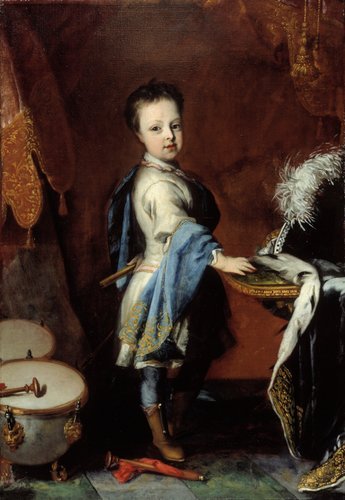
Duke of Holstein-Gottorp, Karl Fredrik as a child, David von Krafft, Finnish National Gallery
Karl Fredrik was only two when his father died. He became a duke as a young child, while his mother, Hedvig Sofia, the King's daughter, ruled as regent. He learned to carry military responsibility at a very young age.
http://kokoelmat.fng.fi/app?si=S+54
5 notes
·
View notes
Text
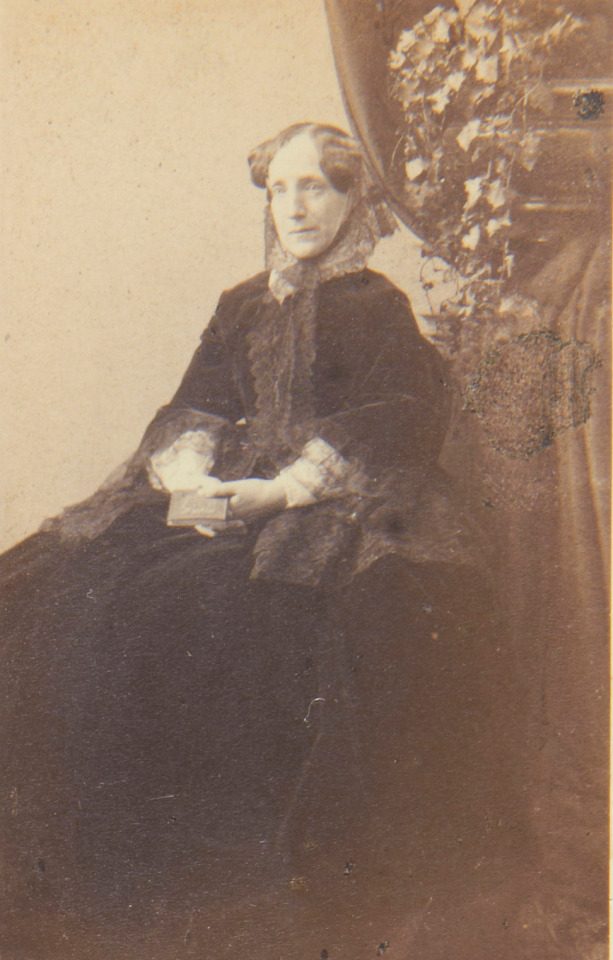

Sophie, Dowager Grand Duchess of Baden (1801-1865) in 1864.
Sophie was born in Stockholm, Sweden, on 21 May 1801. She was the daughter of King Gustav IV Adolf of Sweden and his wife, Princess Frederica of Baden. After her birth, she was raised under the supervision of the royal governesses Hedvig Ulrika De la Gardie and Charlotte Stierneld in succession.
Sophie was eight years old when her father was deposed by the Coup of 1809 and she left Sweden with her family. Between the time of the coup which deposed her father, and leaving Sweden, she and her mother were under house arrest. During this period, she was described in the famous diary of Hedwig Elizabeth Charlotte of Holstein-Gottorp as a stubborn girl who was much more haughty and possessed less self-control than her brother Gustav. An anecdote describes the contrast between the siblings. When Fredrika and her children were given permission to join the deposed king, famous Swedish nobleman Axel von Fersen came to discuss the arrangements. When he was about to leave, Sophie's older brother ran to the door to open it for Fersen. The former queen Fredrika is quoted as saying, "Sophie would never in the world have done that, she thinks of herself too highly for that."
In 1815, she was engaged, and on 25 July 1819 in Karlsruhe, Sophie married her half-grand-uncle Prince Leopold of Baden, the son of a morganatic marriage. The marriage with Leopold had been specifically arranged by her uncle, Grand Duke Karl I of Baden, to improve the chances that Leopold would one day succeed him as grand duke because of Sophie's royal lineage; Leopold, though his right to the throne was recognized, was originally the issue of a morganatic marriage. During the reign of Louis I, Grand Duke of Baden, they lived a modest life away from court, as Louis did not want the heir to the throne at court. In 1830, her husband ascended to the grand ducal throne as Leopold I, and Sophie became Grand Duchess of Baden.
Sophie is described as wise and dutiful but strict. She kept late hours and arose late in the mornings, after which she spent hours writing letters to various relatives around Europe in her négligée. She was interested in science, art and politics, and kept herself well informed on all political events of the day through her correspondence. Her ties to the Viennese court were particularly tight, and it was to Vienna her sons were sent to complete their education. Sophie retained a certain bitterness over the deposition of her father, and took it very badly when her brother was deprived of his status as a Swedish prince.
During the tumult caused by the appearance of Kaspar Hauser, Sophie was rumoured to have ordered Hauser's assassination in 1833. This damaged her relationship to her husband, and Sophie was said to have had an affair. During the revolution of 1848, she was forced to flee from Karlsruhe with her family to Strasbourg. They returned in 1849, after the revolt had been subdued by Prussian forces. She became a widow in 1852. Sophie convinced her son Frederick to enter an arranged dynastic marriage rather than a marriage to his love, Baroness Stephanie von Gensau.
In 1852, the Swedish royal house wished to make peace with the deposed Swedish royal house, and Oscar I of Sweden and Josephine of Leuchtenberg tried to arrange a meeting, but without success. In 1863, however, Sophie met the Swedish heir presumptive Prince Oscar II of Sweden and his consort Sophie of Nassau. The meeting was a success: Sophie asked him about how the Stockholm of her childhood had changed, and when they left, she presented the couple with a gift to their son prince Gustaf, a medallion with the inscription "G" and the crown of the Swedish Crown Prince, because he had the same name as her brother.
Family Resemblance
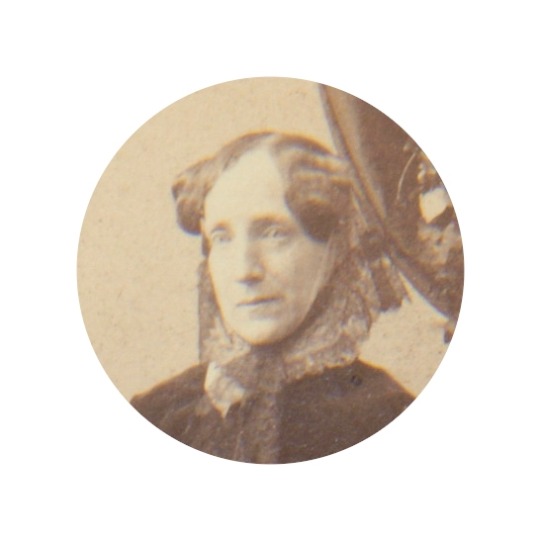

Her granddaughter, Queen Victoria of Sweden née Baden took after her.
Source: Royal Collection
#Grand Duchess sophie of baden#Dowager Grand Duchess sophie of baden#princess Sophie of Sweden#baden#queen victoria of sweden#princess Victoria of baden#german royal#german royalty#swedish royalty#swedish royal#1864#1860s
22 notes
·
View notes
Note
Hej~ Can I ask for either Hedvig Sofia and Frederik IV of Holstein-Gottorp in 1A or Sweden and Karl XII in 4B?
Not sure which version i prefer...


45 notes
·
View notes
Text
German(-Russian) nobles in period dramas!
@germanaustriannoblesandroyals I’m responding to this post in which you asked if anyone knew of various portrayals of German nobles, including those who married into German noble families. (But also for the potential benefit of my own followers. I don’t know how helpful any of these will be for making gifs and whatnot as I know far from all of them have subs.) Luckily, the Russian royal family starting with the mid-18th century is a goldmine for German nobility; and, luckily too, Russia loves making period dramas about the Romanovs. (For ease, I’m gonna go in chronological order here.)
Anna Petrovna
A daughter of Peter the Great, she married Karl Friedrich, Duke of Holstein-Gottorp. Both Anna and her husband are portrayed in the first and second movies of the Secrets of the Palace Revolutions movie cycle, “The Emperor’s Will” and “The Empresses’ Will.”

Elisabeth Katharina Christine von Mecklenburg-Schwerin (Anna Leopoldovna)
Born the daughter of a German duke, (and later married another German Duke, Anthony Ulrich of Brunswick) she was the mother and regent of Russian Emperor Ivan IV until he was deposed in a coup d’etat. She is portrayed in the final film of the Secrets of the Russian Revolutions cycle, Okhota Na Princessu (Hunting a Princess).

Her husband, Anton Ulrich, is also portrayed in that film, as well as in the tv series Ekaterina.
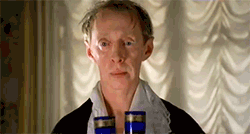
Karl Peter von Holstein-Gottorp (Peter III Fyodorovich)
The Russian Emperor Peter III was born Duke of Holstein-Gottorp. There are several portrayals of him, the best one (IMO) being the tv series Ekaterina. (His wife, Catherine, was a German princess, but I saw that you already made a gifset of her.)
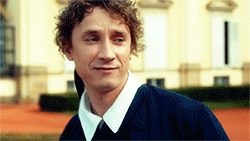
Also, interestingly (and kind of amazingly) Ekaterina also portrays Peter’s senior chamberlain, Christian August von Brockdorff, a member of a prominent Holstein noble family, who was one of Peter III’s favorites, especially in the mid 1750s.
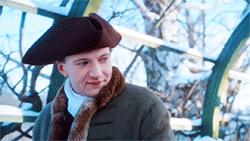
Wilhelmina Luisa von Hessen-Darmstadt (Natalia Alekseyevna)
Paul I’s first wife was the daughter of Louis IX, Landgrave of Hesse-Darmstadt. She (as well as her two sisters Friederike Luise and Friederike Amalie) are portrayed in the second season of the tv series Ekaterina.
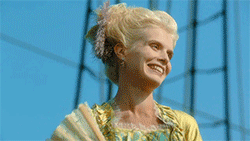
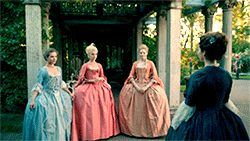
Sophie Dorothea of Württemberg (Maria Fyodorovna)
The second wife of Paul I was also a German princess. She is portrayed in the second season of the tv show Ekaterina, as well as in the tv series Adyutanty Lyubvy (Adjutants of Love) and the movie Bedniy Bedniy Pavel (Poor Poor Paul).

Louise of Baden (Elizaveta Alexeyevna)
Born a German princess, she was the wife of Alexander I of Russia. She is portrayed in the tv series Adyutanty Lyubvy (Adjutants of Love), Severniy Sfinks (Northern Sphinx) and the movie Bedniy Bedniy Pavel (Poor Poor Paul).
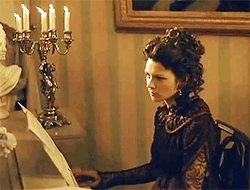
Friederike Luise Charlotte Wilhelmine von Preußen (Alexandra Fyodorovna)
She was the daughter of the Friedrich III (later became Nikolai I’s wife). She is portrayed in a couple of different tv shows, the most prominent of which is Bednaya Nastya (Poor Nastya), as well as in the movie The Captivating Star of Happiness.

Maximiliane Wilhelmine Auguste Sophie Marie von Hessen (Maria Alexandrovna)
She was born a daughter of Ludwig II von Hessen (later married to Alexander II of Russia). She is portrayed in several tv shows, the more prominent of which are Bednaya Nastya (Poor Nastya) and Institut Blagorodnikh Devits (Institute for Noble Maidens).

Victoria Alix Helena Louise Beatrice von Hessen (Alexandra Fyodorovna)
Daughter of Louis IV of Hesse (married to Nikolai II). She is portrayed in a lot of stuff lol, the more well-known/accessible ones are probably: Nicholas and Alexandra (1971), Grigoriy R, Rasputin (1996), Rasputin (2011), Mathilde (2017).

25 notes
·
View notes
Photo

Princess Friederike of Schleswig-Holstein-Sonderburg-Glücksburg (Friederike Karoline Juliane), Duchess of Anhalt-Bernburg (9 October 1811 - 10 July 1902)
born in Gottorp, Schleswig, to Friedrich Wilhelm, Duke of Schleswig-Holstein-Sonderburg-Glücksburg (1785-1831) and Louise Caroline of Hesse-Kassel (1789-1867)
married Alexander Karl, Duke of Anhalt-Bernburg (1805-1863) on 30 October 1834
died at the age of 90 in Ballenstedt, Anhalt
#friederike of schleswig-holstein-sonderburg-glucksburg#duchess of anhalt-bernburg#history#women in history#19th century#art#long live the queue
9 notes
·
View notes
Text

📗ROMANOV HANEDANI KİMDİR? VLADİMİR LENİN BU AİLE HAKKINDA NELER SÖYLEMİŞTİ ?📌
VLADİMİR LENİN: ÇARCI KRALLIĞIN İÇYÜZÜNÜ GÖSTERDİ. ONU SON SINIRINDA DEĞİN GÖTÜRDÜ, ONUN TÜM KOKUŞMUŞLUK VE BAYAĞILIĞINI ORTAYA KOYUP, BAŞINDA KORKUNC (RASPUTİN) OLMAK ÜZERE ÇARCI KLİĞİN TÜM UTANMAZLIK VE ÇÜRÜMÜŞLÜĞÜNÜN ROMANOV AİLESİNİN - RUSYA'YI YAHUDİLERİN, İŞÇİLERİN DEVRİMCİLERİN KANINA BOĞAN O KATİLLERİN - MİLYONLARCA DESİYATİN TOPRAĞI ELDE TUTAN VE TÜM CANAVARLIKLARI YAPMAYA VE TÜM CİNAYETLERİ İŞLEMEYE KENDİ PEK KUTSAL MÜLKİYETLERİ İLE SINIFLARININ MÜLKİYETİNİ KORUMAK İÇİN GEREKTİĞİNCE YURTTAŞI YIKIMA UĞRAMAYA VE BOĞAZLAMAYA HAZIR, "EŞİTLERİ ARASINDA BİRİNCİ" OLAN O TOPRAK SAHİPLERİNİN TÜM KAN DÖKÜCÜLÜĞÜNÜN MASKESİNİ ÇIKARDI. ( TEK ÜLKEDE SOSYALİST DEVRİM VLADİMİR LENİN)
ESKİ ÇARLIK İKTİDARI YENİLDİ VE DEVRİLDİ AMA İŞİ BİTİRİLMEDİ KRALLIK RESMEN KALDIRILDI. ROMANOVLAR ÇETESİ KRALCI ENTRİKALARINI SÜRDÜRÜYOR. FEODALLERİN ENGİN TOPRAK-MÜLKİYETİ ORTADAN KALDIRILMADI. ( TEK ÜLKEDE SOSYALİST DEVRİM VLADİMİR LENİN)
BURJUVA DEMOKRATİK DEVRİM, RUSYA'DA TAMAMLANDI. BİR KEZ İKTİDARA GEÇTİKTEN SONRA BURJUVAZİ, 1906- 1914 ARASINDA KANLI NİKOLAY VE CELLAT STOLİYPİN'İ DESTEKLEMEKTEKİ ÇABALARI YÜZÜNDEN ÜN KAZANAN AÇIKÇA KRALCI ÖGELER, (GUÇKOV VE KADETLERİN SAĞINDAKİ ÖTEKİ SİYASET ADAMLARI) İLE BİRLEŞTİ VE BAĞLAŞTI. LVOV VE HEMPALARININ YENİ BURJUVA HÜKÜMETİ, ROMANOVLAR İLE RUSYA'DA KRALLIĞIN YENİDEN KURULMASINI GÖRÜŞMEYE GİRİŞTİ VE BU İŞE BAŞLADI. DEVRİMCİ BİR SÖZEBELİĞİ ÖRTÜSÜ ALTINDA, BU HÜKÜMET KİLİT GÖREVLERE ESKİ REJİM YANDAŞLARINI GETİRİYOR. ( TEK ÜLKEDE SOSYALİST DEVRİM VLADİMİR LENİN)
TÜM DÜNYADA BURJUVAZİ VE BÜYÜK TOPRAK SAHİPLERİNİN HÜKÜMETLERİ, HALKI BASKI ALTINDA TUTMAK İÇİN 2 YOL BULMUŞLARDIR: ÖNCE ZOR VE ŞİDDET, NİKOLAY ROMANOV 1 (SOPA NİKOLAY) VE 2.NİKOLAY (KANLI NİKOLAY) RUS HALKINA BU İŞKENCECİ DAVRANIŞI İLE OLANAKLI OLAN VE OLMAYAN ŞEYLERİN AZAMİSİNİ GÖSTERMİŞLERDİR. ( TEK ÜLKEDE SOSYALİST DEVRİM VLADİMİR LENİN)
Romanov Hanedanı (/ˈroʊməˌnɔːf, -ˌnɒf, roʊˈmɑːnəf/; ayrıca Romanoff] Rusça: Рома́новы, Románovy) , 1613-1917 yılları arasında Rusya'nın hükümdar kraliyet ailesiydi. Romanovlar, Moskova'nın Büyük Dükalığı'nın ve daha sonra 1598'de Çar I. Fyodor'un ölümü üzerine soyu tükenmiş olan Rurik hanedanlığı döneminde Rusya Çarlığı'nın asilzadeleri olarak ön plana çıktı. 21 Şubat 1613'te Mihail Romanov, Zemsky Sobor tarafından Rusya Çar'ı seçildi ve Romanovları Rusya'ya hakim olan ikinci hanedan yaptı. Mihail'in torunu I. Petro (Büyük Petro), 1721'de Rus İmparatorluğu'nu kurdu ardından bir dizi savaş ve reform yoluyla ülkeyi büyük bir güce ulaştırdı. Romanovların doğrudan erkek varisleri, Elizaveta Petrovna1762'de öldüğünde sona erdi. 5 Ocak 1762'den itibaren imparatorluk tahtının kadın hattı boyunca Prenses Anna Petrovna'nın ve Holstein-Gottorp Dükü Karl-Friedrich'in, oğulları Holstein-Gottorp Dükü Karl Peter Ulrich (III. Petro), Romanov Hanedanı üyesi olarak tanındı. Böylece, şecere kurallarına göre, Elizaveta Petrovna'nın torunları bazen "Holstein-Gottorp-Romanov" olarak anılmaktadır. Şubat Devrimi'nin ardından İmparator II. Nikolay 15 Mart 1917'de çekilmiş ve böylece 304 yıl süren Romanov yönetimini sona ermiştir. Ardından, 1918'de İmparator II. Nikolay ve ailesi Bolşevikler tarafından kurşuna dizilerek öldürüldü ve Romanov Hanedanı'nın 65 üyesinin hayatta kalan 47'si yurtdışına sürgüne gitti.
ile geleneğine göre, Romanovların ataları 14. yüzyılın başında Rusya'ya “Prusya'dan” geldiler. Ancak tarihçi Veselovsky, Romanovların Novgorod'un yerlileri olduğunu iddia etmektedir. Romanovların ve diğer bir dizi soylu ailenin ilk güvenilir atası, Moskova Prensi Simeon Ivanovich Gordiy 'in asilzadelerinden Andrei Kobyla olarak kabul edilir. Fiyodor Koshka'ın torunları Koshkin olarak adlandırılmaya başlandı. Zakhary Ivanovich Koshkin'in çocukları Koshkins-Zakharyin olarak adlandırılırken, torunları sadece Zakharyins olarak adlandırıldı.IV. İvan döneminde, eski aile Yakovlev (aralarında Alexander Herzen) olarak bilinirken, Roman Yurievich Zakharyin-Yuriev'in torunları isimlerini "Romanov" olarak değiştirdiler. Feodor Nikitich Romanov, Rurik hanedanından kadın hattı üzerinden indi. Annesi Evdokiya Gorbataya-Shuyskaya, Alexander Gorbatyi-Shuisky'nin kızı Shuysky şubesinden bir Rurik prensesi idi.
İktidara Yükselişleri
Romanovların yükselişi, Roman Yurievich Zaharin'in kızı Anastasia Romanovna Zaharina-Yuryeva'nın Moskova'nın Büyük Dükü IV. İvan ile evlenmesiyle başlar. İvan çar ilan edildikten sonra, Anastasia ilk Rus Çariçesi oldu. Zaharini-Yuriev hanesi böylece çarlık içerisinde daha iyi bir konuma geldiler. IV. İvan'dan sonra yerine, varisi olmayan üçüncü oğlu Fyodor geçti. Fyodor'un ölümünden ve 700 yıllık Rurik hanedanının son bulmasından sonra, Zemsky Parlamentosu Fyodor'un kayınbiraderi Boris Godunov'u 1598'de çar olarak seçti. Kısa süre sonra annesiyle idam edilen oğlu II. Fyodor Borisoviç tarafından yerine getirildiği andan itibaren 1605'te ani ölümüne kadar hüküm sürdü. Godov'un hükümdarlığı döneminde Romanovlar zor zamanlar geçiriyorlardı. Rurik hanedanına yakınlıklarından dolayı, yeni çar tarafından tehlike olarak görülen Feodor Nikitich Romanov ve ailesi sürgün edilmiş ve oğlu Mihail Ramanov'da manastırda hapsedilmiştir. Godov'un düşmesinden sonra Romanovlar'ın pozisyonu önemli ölçüde değişti. Fyodor Romanov, Rurik hanedanının son imparatoru Fyodor Zvonar'ın bir akrabası olduğundan, Rusya'nın çalkantılı zamanlarında taht için rekabet içerisinde olan asilzadeler onu yanlarında istiyorlardı. Ancak, Fyodor Romanov'un oğlu 16 yaşındaki Mihail Romanov'un, Rurik hanedanına en yakın akraba olarak görülmesi ile bu çalkantılı dönem sona ermiş ve tahta Mihail Romanov çıkmıştır (1613). Bu, Romanov hanedanının, 15 Mart 1917'de II. Nikoloy'ın tahttan çekilmesine dek sürecek 300 yıllık saltanatının başlangıcı idi.
Ülke: Rusya Çarlığı,Rus İmparatorluğu,Polonya Krallığı,Finlandiya Grandüklüğü, Oldenburg Büyük Dükalığı, Holstein Düklüğü
Milliyet Rus, Alman, Litvan
Kuruluş 1613
Kurucu I. Mihail
Devriliş 1917: Bolşevik Devrimi
Son hükümdar II. Nikolay
Unvan(lar) Çar, Kral, İmparator, Dük, Grandük, Çariçe, İmparatoriçe
#vladimir lenin#alexandra romanovna#romanov family#tatiana romanov#anastasia nikolaevna romanova#elena romanova#russia history#sovier russia#çarlık Rusya#2.nikolay#ikinci nikolay#kanlı nikolay
1 note
·
View note